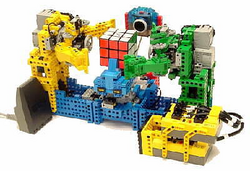Bluebottle Coffee Company, an artisan microroaster, is a purveyor of Way Beyond Critical to Quality (WBCTQ). In the minutes leading up to a sip of Bluebottle espresso, my knees go giddy with anticipation, because they know I’m about to have the best damn coffee around, crafted with care by one James Freeman. Like Woody Allen, Freeman is a clarinetist when not laboring for his art, and that art is sublime: watching him whip up a cappuccino from beans roasted not more than 24 hours ago is a deep lesson in passionate product creation. He’s serious about brewing coffee to the hilt:
The highest achievement, I think, is just a straight shot of espresso. Coffee itself is very sexual. Espresso is nerdy. You have to have the soul of a poet and the heart of a band nerd to get everything right.
Freeman takes things beyond sane limits because it’s the only way he knows – it’s about Way Beyond Critical to Quality (WBCTQ). Ettore Bugatti and Enzo Ferrari understood WBCTQ . Yvon Chouinard, Steve Jobs, and Quentin Tarantino are instinctive WBCTQ’ers. Bluebottle Coffee is using WBCTQ to create what, one day, will be a widely-renowned brand. Doing things to the hilt is how great brands get made.


 Iridium. It was the ill-fated venture which placed 66 (out of a planned 77) communication satellites into orbit before finding out that the value proposition was fundamentally flawed. Millions of dollars were lost along the way. Could this fate have been avoided?
Iridium. It was the ill-fated venture which placed 66 (out of a planned 77) communication satellites into orbit before finding out that the value proposition was fundamentally flawed. Millions of dollars were lost along the way. Could this fate have been avoided?